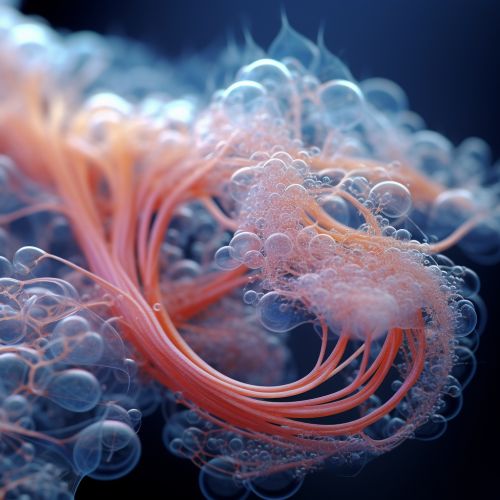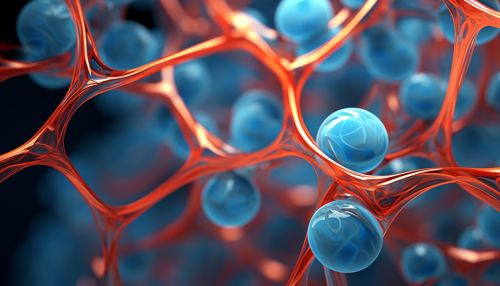Spliceosome
Introduction
The Spliceosome is a complex molecular machine found primarily within the nucleus of eukaryotic cells. Its primary function is to remove introns from a transcribed pre-mRNA segment, a process known as splicing. This editing process is vital for the correct translation of the genetic code into proteins, which are essential for the function of the organism.
Structure
The spliceosome is composed of five small nuclear ribonucleoproteins (snRNPs), named U1, U2, U4, U5, and U6, and numerous additional proteins. Each snRNP consists of a specific small nuclear RNA (snRNA) and several proteins. The snRNAs are named after their snRNPs. The spliceosome undergoes a series of structural rearrangements in order to carry out its function.


Function
The primary function of the spliceosome is to remove introns from a transcribed pre-mRNA segment. This process, known as splicing, is necessary for the correct translation of the genetic code into proteins. The spliceosome carries out this function by recognizing the splice sites at the ends of an intron, bringing them together, and then cutting the intron out and ligating the two exons together. The removed intron is then degraded.
Splicing Mechanism
The splicing mechanism of the spliceosome is a complex process that involves several steps. Initially, the U1 snRNP binds to the 5' splice site of the pre-mRNA, and the U2 snRNP binds to the branch point sequence, forming the early (or prespliceosome) complex. The U4/U6-U5 tri-snRNP then binds to this complex, forming the pre-catalytic spliceosome. Following this, several rearrangements occur, leading to the formation of the catalytic spliceosome, which carries out the splicing reaction.
Regulation
The activity of the spliceosome is regulated by various factors, including the concentration of the snRNPs, the presence of other proteins, and the sequence of the pre-mRNA. Alterations in these factors can lead to changes in the splicing pattern, which can have significant effects on the function of the resulting protein.
Clinical Significance
Mutations that affect the function of the spliceosome can lead to a variety of diseases, including certain types of cancer and neurodegenerative diseases. In addition, spliceosome inhibitors are being investigated as potential therapeutic agents for these diseases.
